
Amphibians Around Las Vegas, Wildlife Around Las Vegas
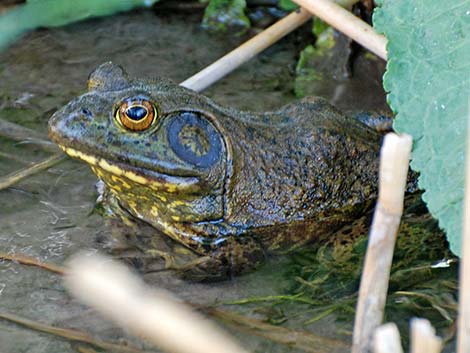 |
General Description: American Bullfrogs (Lithobates catesbeianus) are large, heavy bodied, green or brown frogs with a big mouth, a big eardrum (larger than the eye), and no dorsolateral fold. On other frogs around Las Vegas, dorsolateral folds are ridges that run along the back from the eye to the groin. Taxonomy: Family Ranidae: American Water Frogs. Formerly Bullfrog (Rana catesbeiana). Technical Description: Body size large (to 8 inches). Dorsum brown or green, often fading to light green on the head. Legs banded or blotched dark. Dorsum usually with dark spots. Ventral surface light colored with dark mottling. Dorsolateral folds absent; sacral humps prominent. Eardrum large; the size of the eye or larger. |
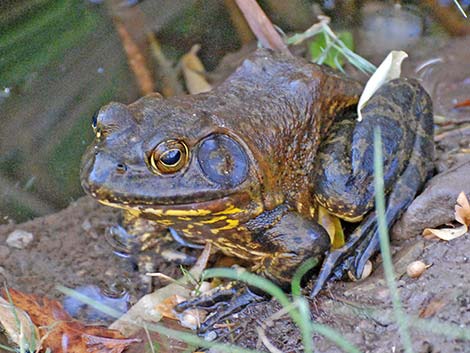 |
Diet: Eats anything they can catch, including native frogs, birds, and bats. Habitat: Aquatic areas, usually ponds with emergent vegetation such as cattails. Range: Native only to the eastern U.S. (east of the Rocky Mountains), this species has been widely introduced in the west. Now occurs in disturbed habitats throughout most of the United States and parts of Canada and Mexico. Breeding: Mate and lay eggs in spring and early summer. Tadpoles become very large (to about 3 in.) and may overwinter. |
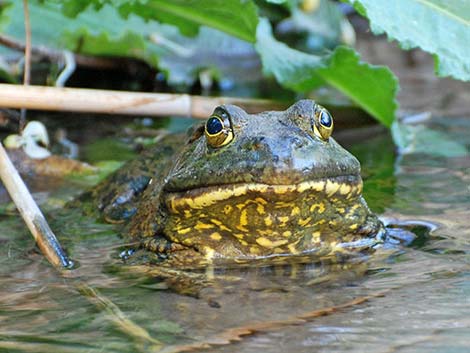 |
Similar Species: There are no other large frogs in southern Nevada. Leopard frogs (Leopard Frog and Relic Leopard Frog) are smaller, have much smaller ear drums, and have a prominent dorsolateral fold. Comments: These predatory frogs are not native to our area and are negatively affecting populations of native frogs. They eat birds and bats, and their presence should be discouraged. |
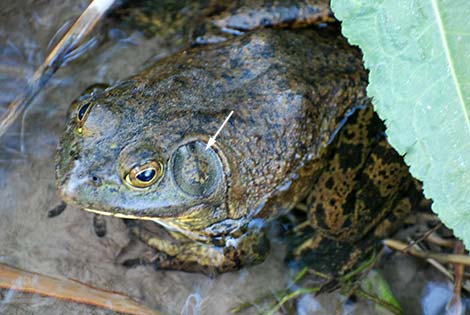 The eardrum (white arrow) is larger than the eye. |
Classroom Pets: I have recently learned that teachers in the Clark County grade schools often raise bullfrogs as a biology project, teaching kids about tadpoles transforming to adult frogs. While this is a worthwhile and interesting way to introduce students to aquatic biology, it raises the question of what to do with unwanted classroom pets at the end of the school year. Unfortunately, some classes release their pets into local ponds and lakes in nice places like Red Rocks, Corn Creek, and Lake Mead. While "Freeing Willie" into the wild might feel good, these voracious, non-native predators become an ecological disaster for native ecosystems. Even if these pets are released into waters that already have bullfrogs, releasing classroom pets might introduce diseases that could affect native species. |
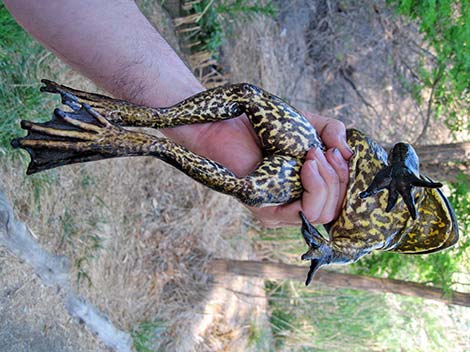 |
While euthanizing classroom pets at the end of the school year is the best solution, it probably isn't acceptable to most classes. If classroom pets can't be euthanized, the next best option might be to release them into urban waters without natural outlets (e.g., Sunset Park, Lorenzi Park, and neighborhood or golf course ponds). These urban waters are environmental wastelands, at least compared to naturally functioning ecosystems, so the added environmental damage would be minimal. The best thing to do would be to euthanize classroom pets, but release into urban waters might be a more acceptable option. |
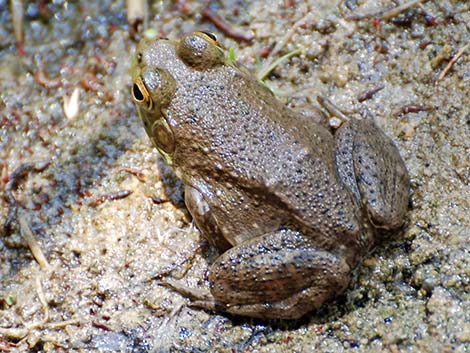 |
Young bullfrog. This young Bullfrog is about the size of a Leopard Frog; note however, the relatively large eardrum, lack of dorsolateral ridges, and warty appearance. |
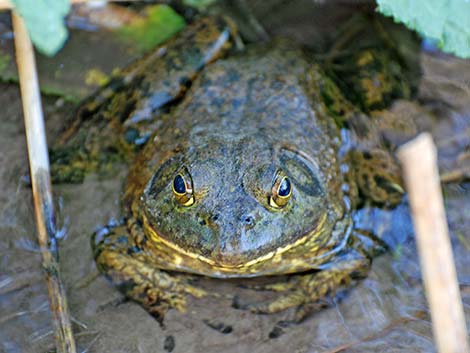 |
If you were a big bug, or even a Phainopepla, this might be the last face you'd ever see. |
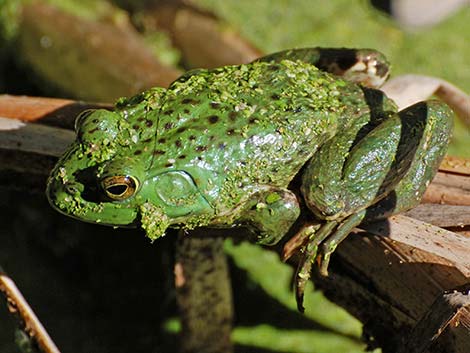 |
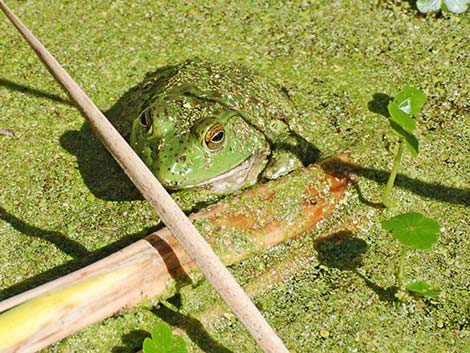 |
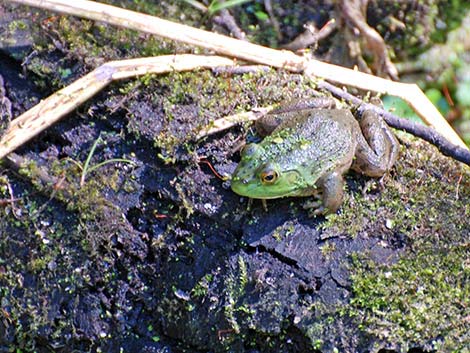 |
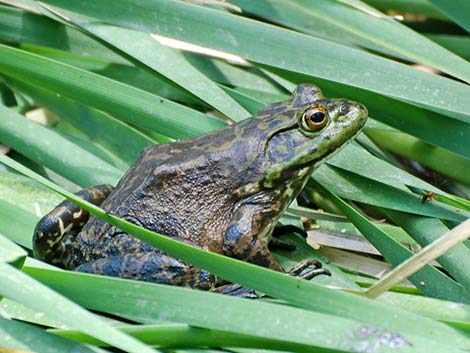 |
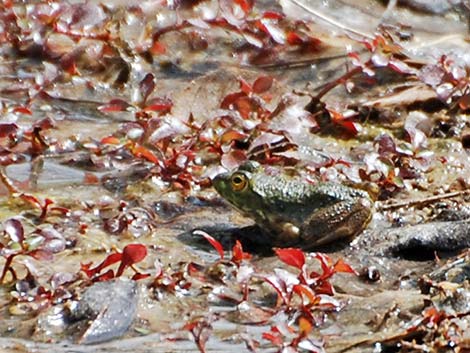 Young bullfrog |
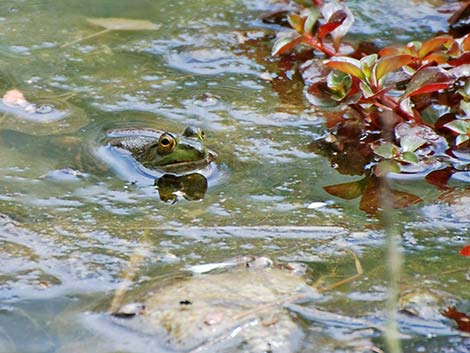 Adult bullfrog |
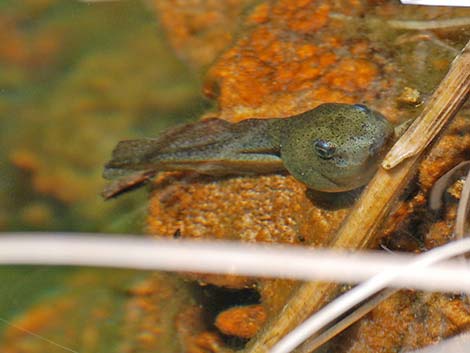 Bullfrog tadpole |
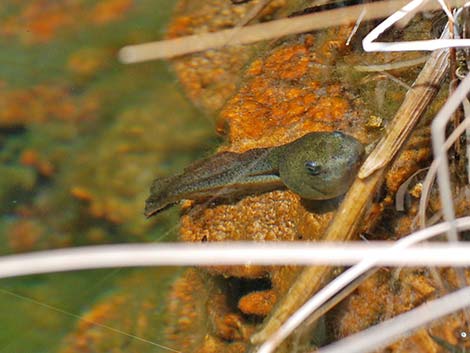 Bullfrog tadpole |
Note: All distances, elevations, and other facts are approximate.
![]() ; Last updated 221116
; Last updated 221116
| Amphibians Around Las Vegas | Wildlife Around Las Vegas | Glossary | Copyright, Conditions, Disclaimer | Home |